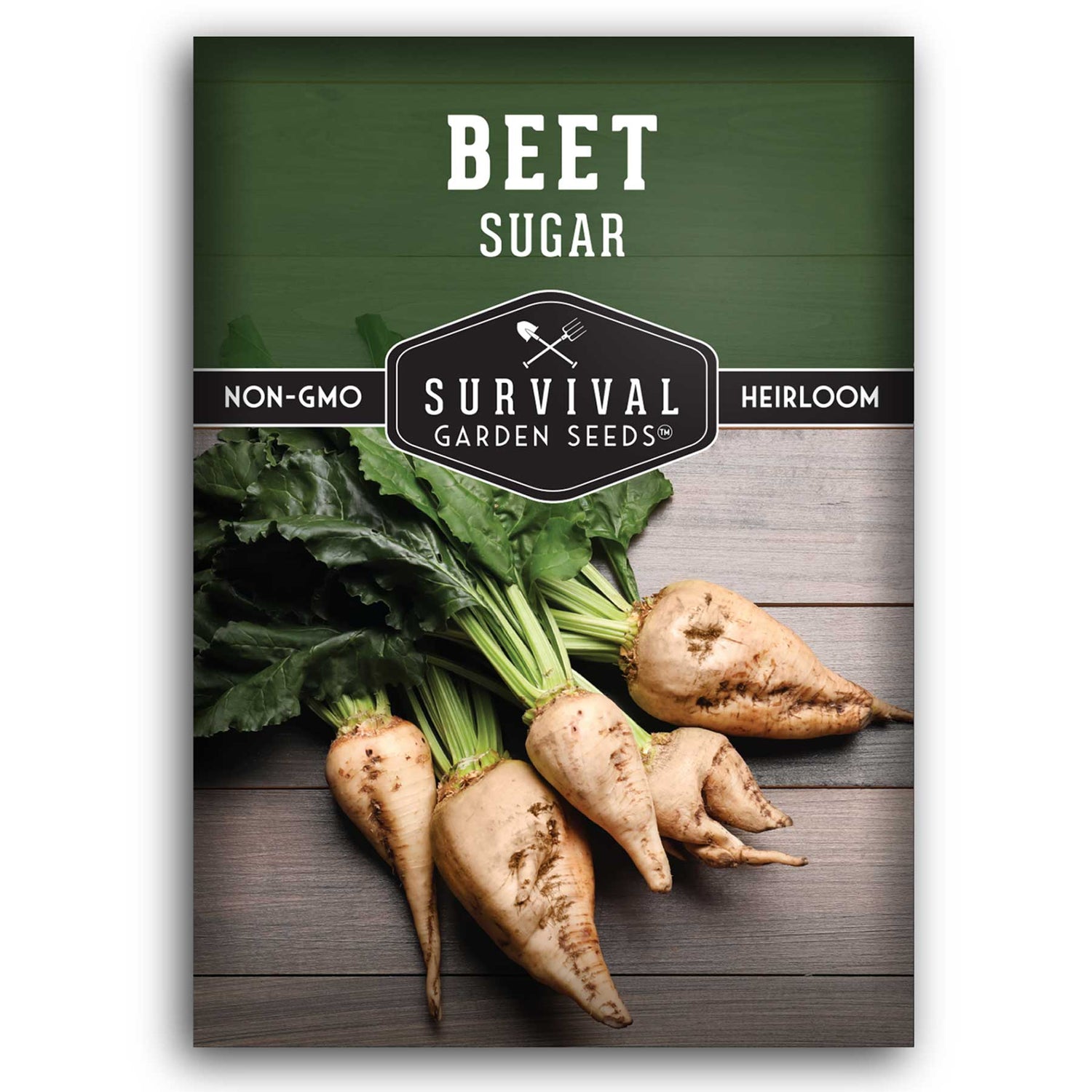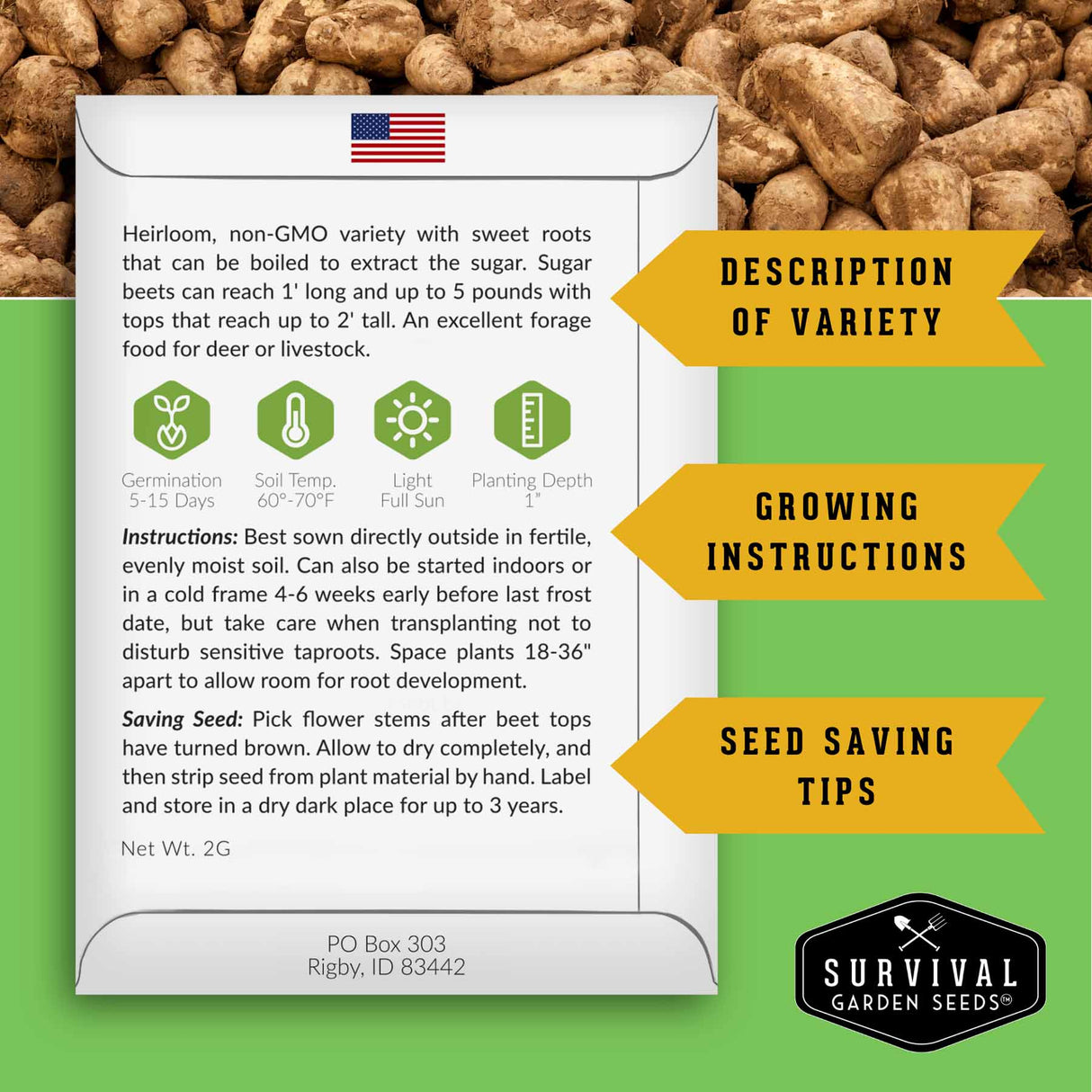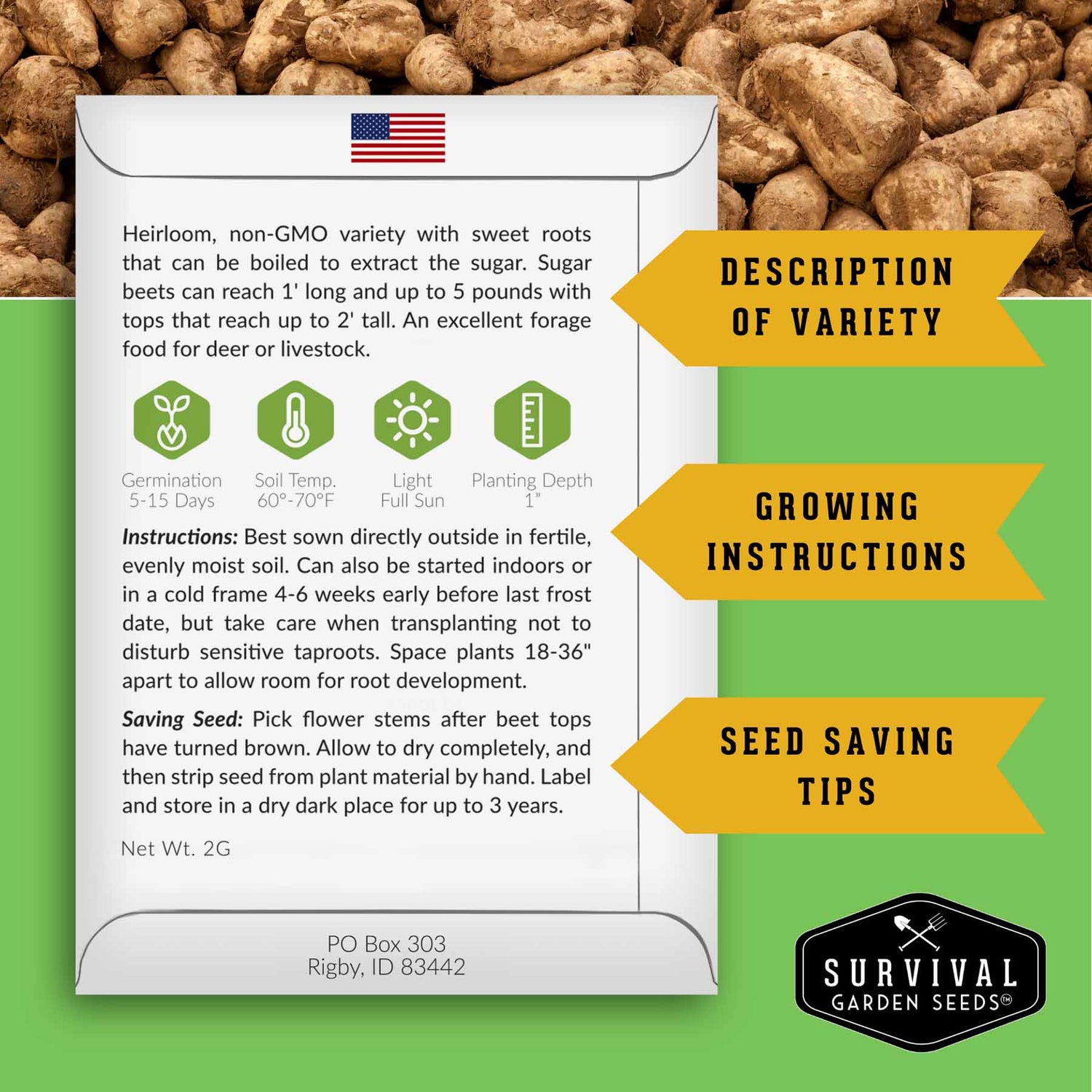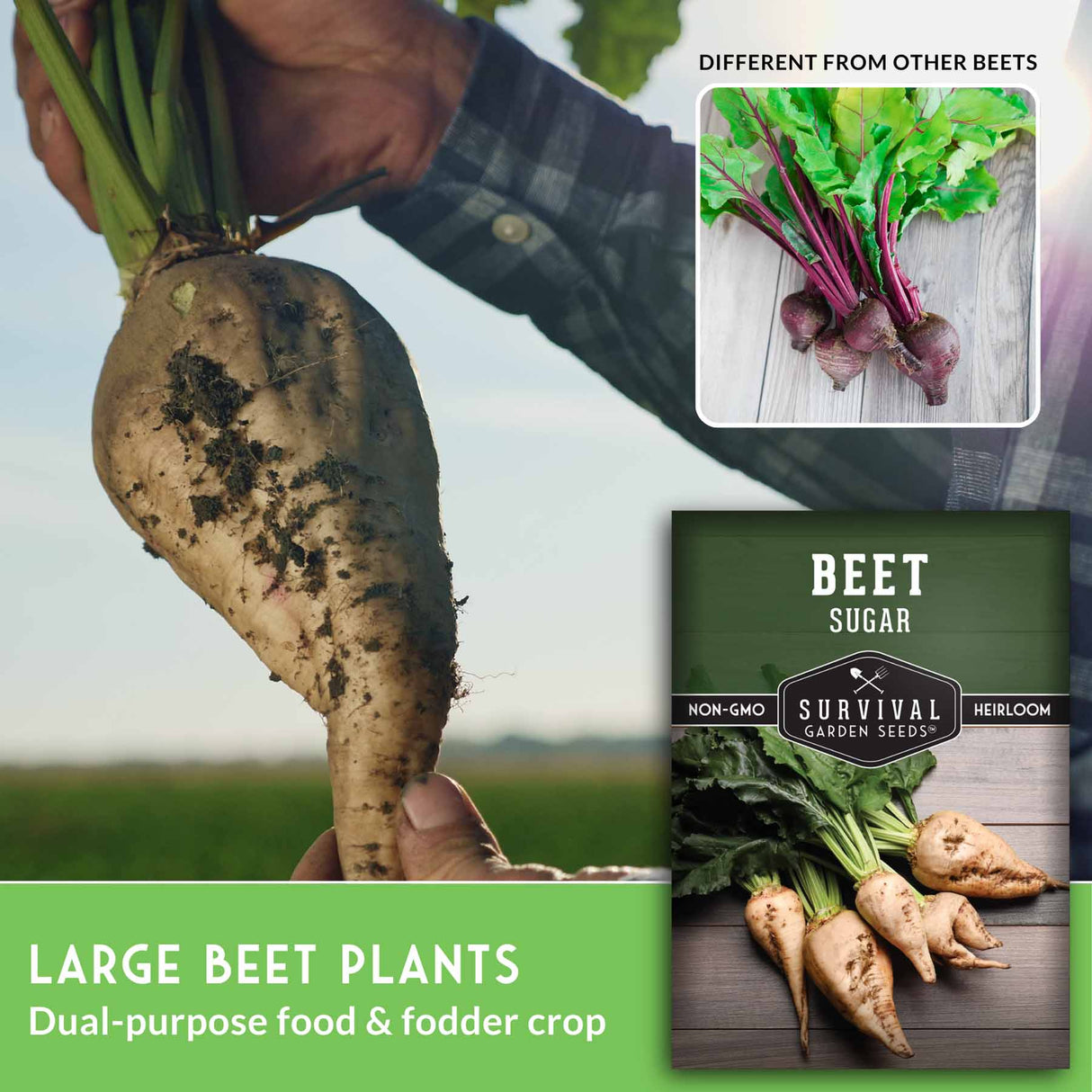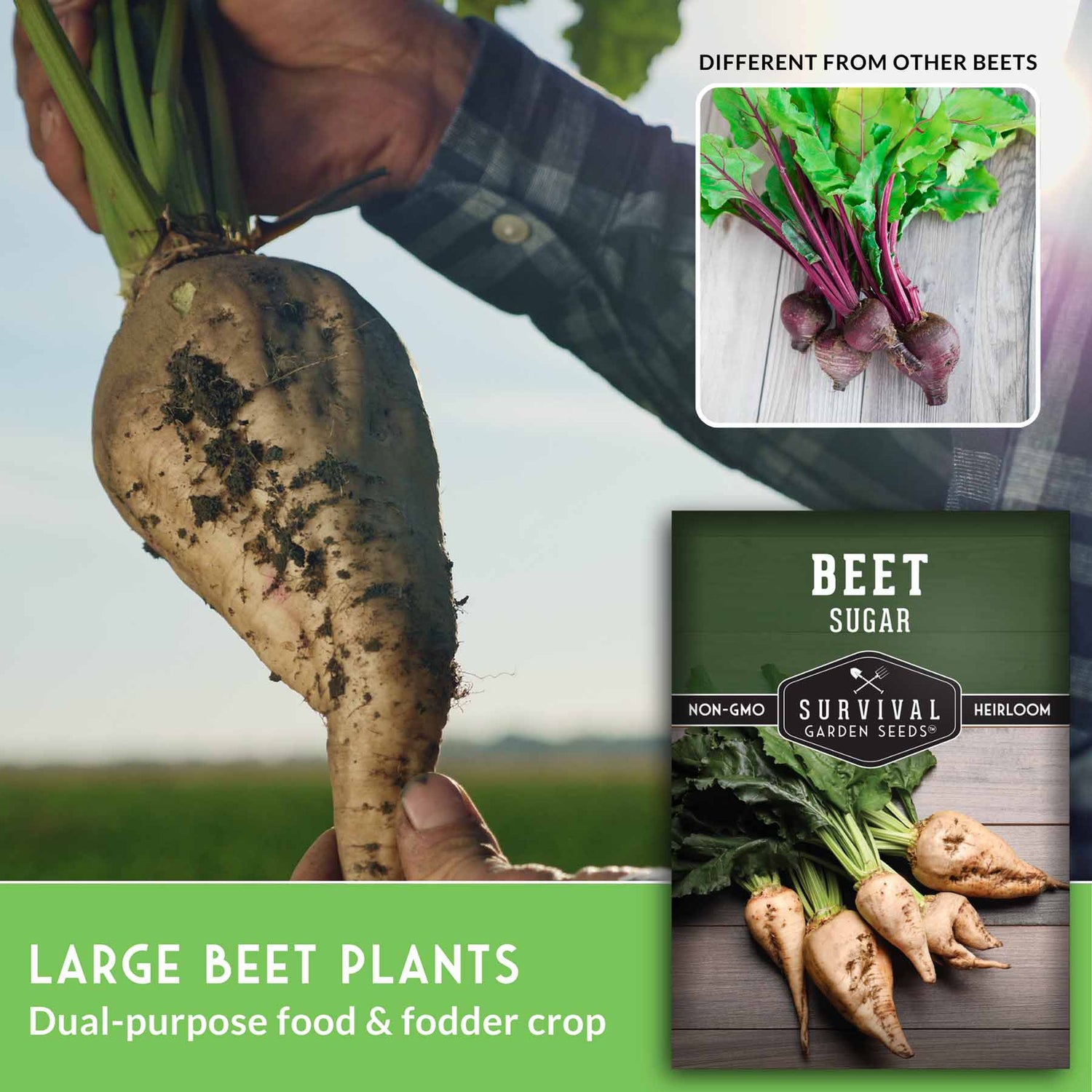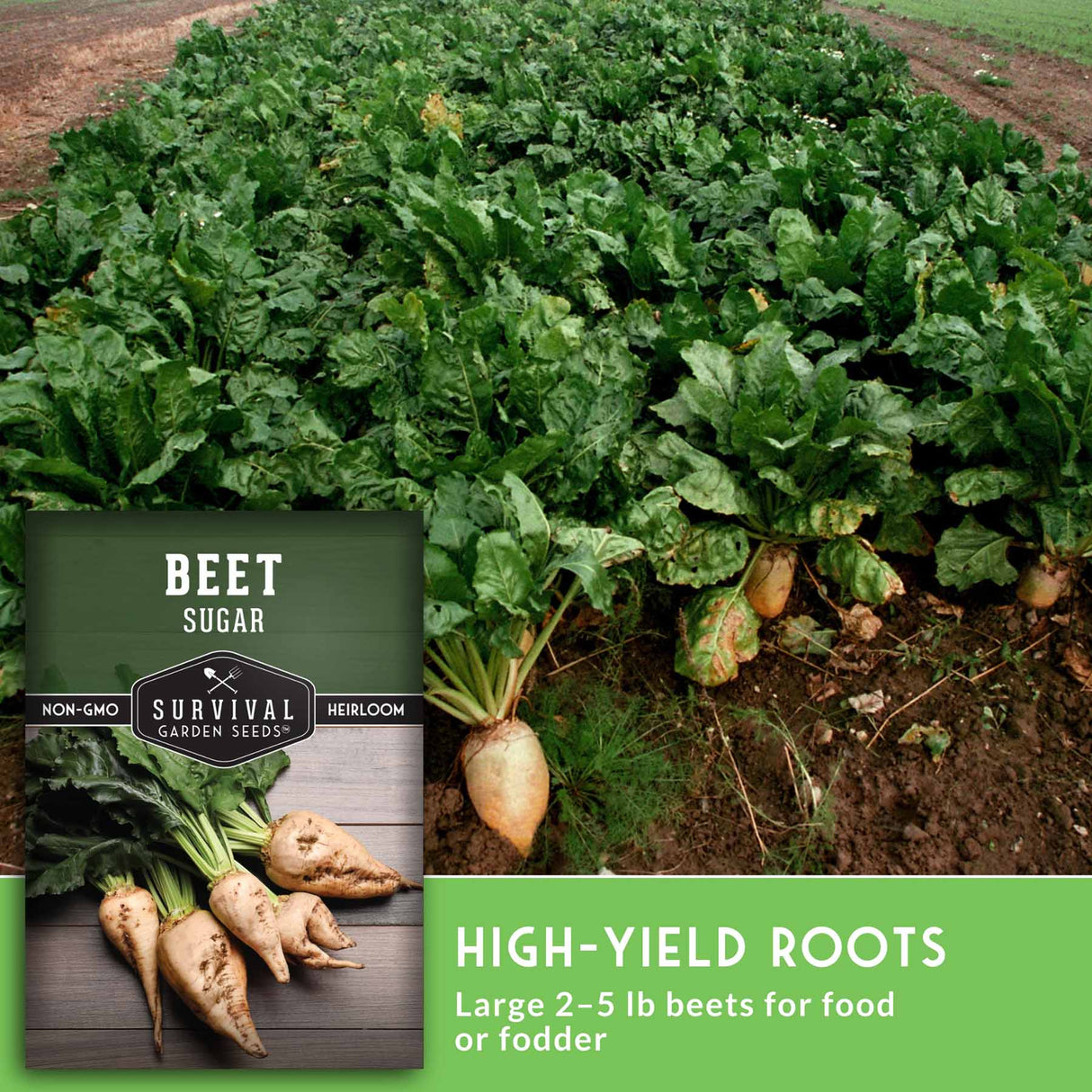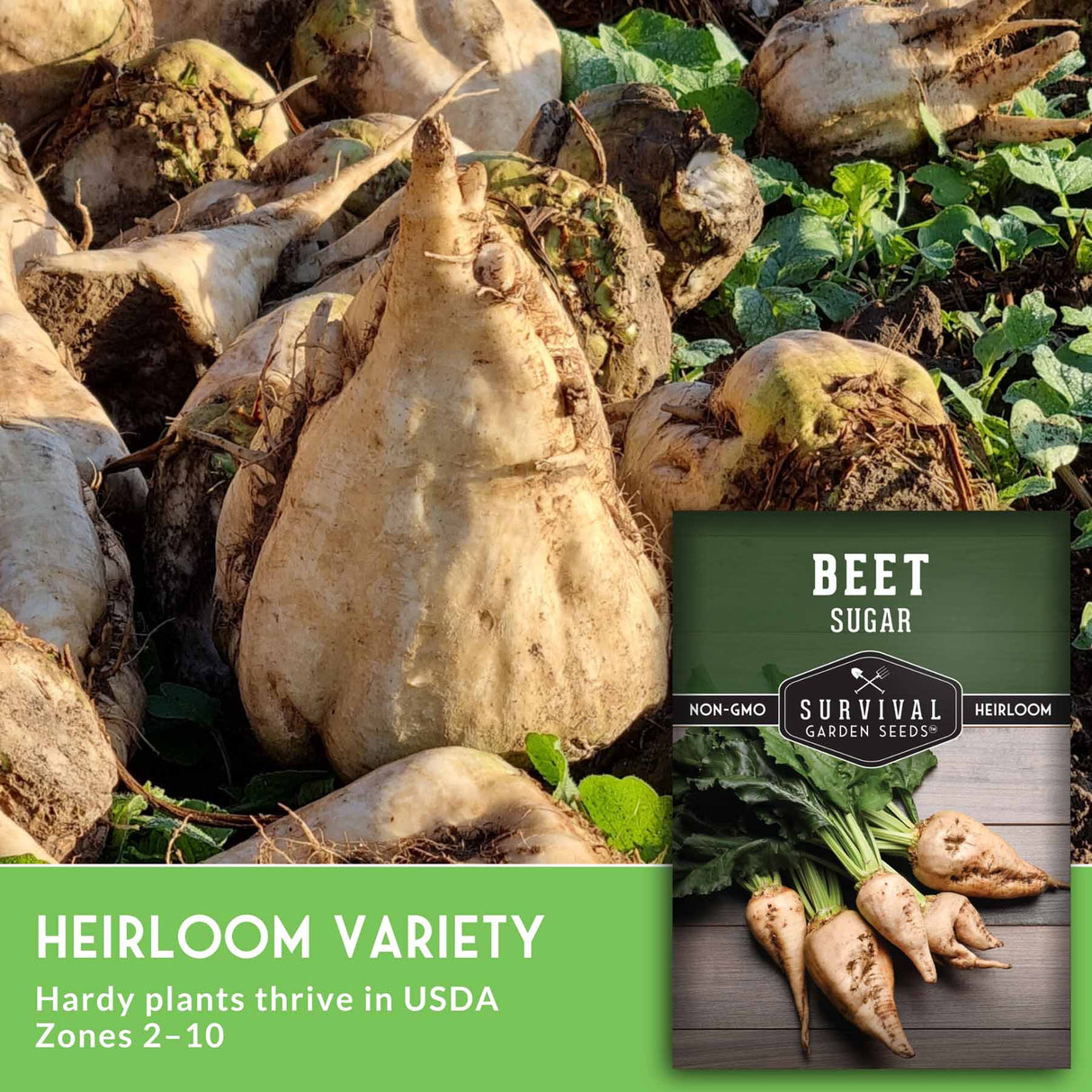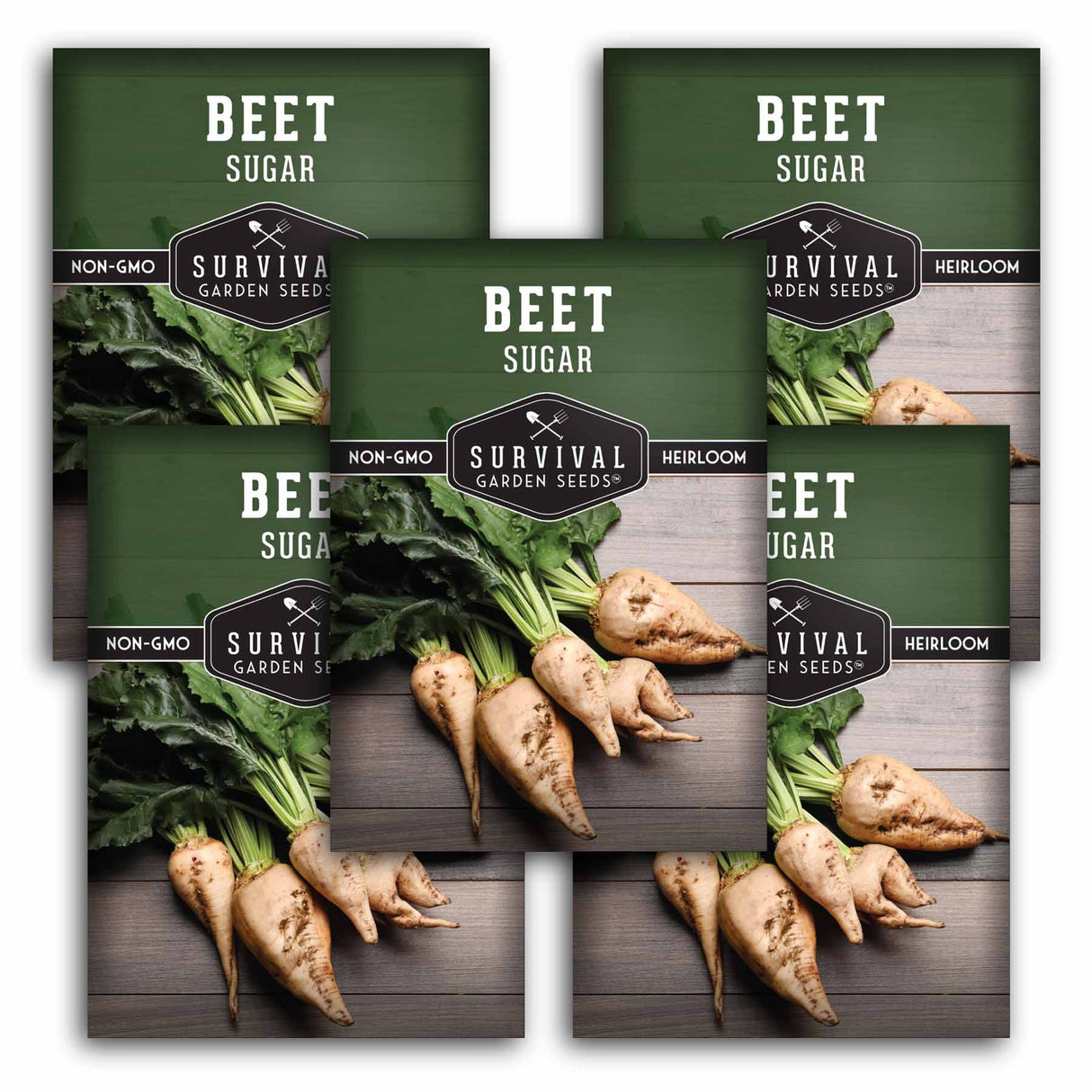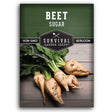Sugar Beet Seeds – Heirloom Non-GMO Variety for Home Sugar Production, Livestock Feed & Soil Enrichment
Heirloom - Non-GMO - Reliable Germination
Sugar Beet Seeds – Heirloom Non-GMO Variety for Home Sugar Production, Livestock Feed & Soil Enrichment - 1 Packet is backordered and will ship as soon as it is back in stock.
Grow your own natural sugar supply with these Heirloom Sugar Beet Seeds (Beta vulgaris var. saccharifera). This versatile biennial vegetable thrives in full sun and cooler climates, producing large, sucrose-rich roots up to 12 inches long and leafy tops reaching 2 feet tall. Sugar beets are primarily grown as an annual for making high-quality sugar, syrup, molasses, and even homemade wine, but they also serve as nutritious greens, protein-rich livestock feed, or a soil-building ground cover for gardeners and homesteaders alike.
Naturally Sweet and Highly Productive
- Excellent alternative to sugarcane for cooler climates
- Yields sweet, high-sucrose roots ideal for syrup or sugar production
- Dual-purpose crop: edible greens and productive roots
- Improves soil quality and attracts beneficial wildlife
Why Customers Love Sugar Beet Seeds
- Heirloom and Non-GMO: Pure, traditional seed stock for peace of mind
- Self-Sufficiency Friendly: Produce your own sugar and molasses at home
- High Yield Potential: Deep roots and large leafy tops for multiple uses
- Versatile Applications: Great for gardeners, homesteaders, and livestock keepers
How to Grow
- Planting: Sow directly in loose, well-drained soil after the last frost. Space seeds 3–4 inches apart in rows 12–18 inches apart.
- Sunlight & Water: Prefers full sun and moderate, consistent watering. Avoid overwatering once roots begin to form.
- Harvest: Harvest roots when they reach 3–4 inches in diameter, typically in late summer or early fall. Tops can be harvested for greens earlier.
How to Make Sugar or Syrup from Beets
- Wash, peel, and shred or dice the roots.
- Boil until tender, then reduce and strain the pulp.
- Allow the liquid to cool and crystalize into natural sugar or continue reducing for molasses.
NET WT. 2G
Heirloom Vegetable Seeds
All of our seeds are open-pollinated, non-GMO, heirloom varieties with tested germination rates
Specifications
Specifications
-
Botanical Name
-
Planting Zones
-
Light
-
Soil Temp for Germination
-
Germination Time
-
Planting Depth
-
Plant Size
-
Days to Harvest
-
Growing Instructions
-
Seed Saving Instructions
-
Seed Count (approximate)-
Payment & Security
Your payment information is processed securely. We do not store credit card details nor have access to your credit card information.
Why Choose Survival Garden Seeds
At Survival Garden Seeds, we believe in preparing today for tomorrow’s peace of mind. That’s why we offer only heirloom, non-GMO, and untreated seeds you can trust to nourish your family and support a sustainable lifestyle. As a family-owned American company, we’re committed to providing seeds that grow strong and true—helping you cultivate health, resilience, and beauty in your garden.

Print Your Own Gift Tags & Envelopes
Spruce up your seed gift with free downloadable print-your-own gift tags & envelopes.
Frequently Asked Questions
What are heirloom seeds?
What are heirloom seeds?
Heirloom seeds are the types of seeds your grandparents grew. These varieties have been passed down from generation to generation. They’re old reliable open-pollinated varieties that aren’t typically grown commercially. Instead, they have a rich history that predates modern breeding techniques.
You can learn more about open-pollinated, heirloom, and non-GMO seeds in our Survival Garden Training blog.
How do I know my seeds are fresh?
How do I know my seeds are fresh?
Every seed packet includes a "packed for" date, and we germination test each seed lot before packaging to ensure you receive viable, high-quality seeds that are ready to grow.
Are your seeds treated?
Are your seeds treated?
No, we do not pre-treat our farmer seeds. All of our garden seeds for sale are untreated, open-pollinated, non-GMO, and heirloom varieties. They are kept in temperature-controlled cooler storage until they are packed and shipped to keep them pest and disease-free.
In what zones can I grow your seeds?
In what zones can I grow your seeds?
The seeds in our collections are specifically chosen from varieties that can be successfully grown from Zone 3 to Zone 10 USDA Hardiness Zones. However, individual varieties have specific needs to thrive in different environments. Each seed pack has optimal temperatures for germination and instructions on seed starting. Consult local frost dates to plan your garden and get the most out of your seeds.
What is the shelf life of these gardening seeds?
What is the shelf life of these gardening seeds?
Most seeds remain viable for 3 to 5 years or longer when stored properly. Check your seed packet for specific varieties. For best results, keep your seeds in a cool, dry place away from direct sunlight and moisture. Store them in an airtight container in a consistent temperature environment—a refrigerator or cool basement works well. Proper storage helps maintain germination rates and extends seed life well beyond the packed date.
Where are Survival Garden Seeds sourced?
Where are Survival Garden Seeds sourced?
The majority of our seeds are sourced in the United States, with a few exceptions when the seed is difficult to source domestically. Whenever we do have to source outside of the US, we ensure our seeds are safe to grow, non-GMO varieties that meet our standards for germination and reliability.


